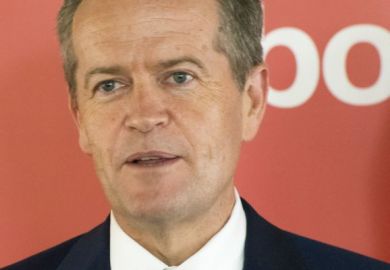It has been decades since Australia saw a rush of amalgamations between higher learning institutions. The so-called Dawkins revolution, prompted by the late 1980s Labor education minister John Dawkins, caused a flurry of concern among supposedly non-viable tertiary institutions – and joining forces did not always end well. Jobs were lost, and people without formal academic credentials in vocational accredited institutes suddenly became professors.
The University of South Australia was formed in that process, and now there is a politically driven move to see it further merge with its neighbour, the University of Adelaide. The idea – which has already been rejected twice, in 2012 and 2018 – was part of South Australia premier Peter Malinauskas’ electoral pitch earlier this year. Among the most important objectives of this policy was the need for a South Australian university to remain in the top 100 in global rankings “to ensure the highest quality research is funded in this state to drive economic growth”.
Malinauskas has maintained interest post-election, allocating A$1 million (£555,000) and three full-time staff to advise on the merger’s feasibility. On 7 December, the state government announced that it had signed a “statement of cooperation” with the University of Adelaide and UniSA. In the words of UniSA chancellor Pauline Carr, the universities are “now entering a feasibility phase of deep interrogation and will produce a detailed business case of what we believe is possible through the creation of a new university”.
But the universities have already decided that, were the merger to go ahead, the combined institution would be called Adelaide University and be operational from January 2026. A transition council would be established, with membership split evenly between the two universities. UniSA would nominate the chancellor, with leadership, at least initially, being shared between the two existing vice-chancellors.
The vice-chancellors claim that any merger would see “no net job losses”. However, they offer little by way of justification, and the history of such vast organisational changes gives cause for scepticism. As the local newspaper, Adelaide Now, pointed out, talk of “greater productivity and economies of scale” is always a recipe for job cuts and trimming. “Why have duplication, particularly in administrative functions?”
South Australian Greens MP Robert Simms agrees. “The experience of mergers from interstate and overseas demonstrates that they inevitably result in job losses and a reduction in the quality of the student experience,” he told the Canberra Times, adding that state government funding would be better spent on increasing the number of staff and reducing casualisation in the workforce.
Andrew Norton, professor in the practice of higher education policy at the Australian National University, is also concerned about the quality of education for local students after restructuring enterprises mainly undertaken to save costs and strengthen ailing institutions. In his view, such mergers “can reduce competition for domestic students, who are meant to be the core purpose of Australian universities”.
Such concerns are certainly filtering through the South Australian tertiary sector, notably through the National Tertiary Education Union. South Australian university staff are almost evenly divided on the amalgamation, with an NTEU survey of about 300 UniSA staff members finding that 52 per cent did not support the merger, with the rest either fully or partially supportive.
One key issue is transparency – something the Australian university sector is not known for. While students and staff will be consulted, the findings of any studies will remain subject to commercial confidentiality. No sensible commentator will insist that the negotiations be entirely opened to public scrutiny but, given the potential impacts on staff, students and the broader university sector, feasibility studies certainly should be open to scrutiny.
Adelaide and UniSA abandoned their merger talks in 2018 after four months of deliberation, and the commissioning of an interim consultants’ report on the merger’s merits. “Our university,” wrote UniSA vice-chancellor David Lloyd in an email to staff, “has been cautious never to allow the light of optimism or ambition to blind robust and evidence-based projection and planning.”
That seems to be the position of Adelaide’s other university, Flinders, this time around. It has publicly rebuffed efforts from the vice-chancellors of both Adelaide and UniSA to join the venture, a point confirmed in an email sent by Flinders vice-chancellor Colin Stirling to staff on 8 December. “We are a strong and distinctive institution with an enviable reputation as an innovator,” Stirling bullishly wrote. “Moreover, our very positive trajectory in recent years should give us confidence in our future and in our capacity to continue to compete strongly, regardless of whether the proposed merger proceeds.”
The merger will need legislative approval in South Australia’s parliament, which is by no means certain. Opposition education spokesperson John Gardner was blunt regarding his reservations and keen for the process of government financing to be more transparent: “South Australian taxpayers deserve to know how much the Premier’s negotiation is going to cost them, and what they’re going to get for their money.”
The same goes for university staff.
Binoy Kampmark is senior lecturer in the School of Global, Urban and Social Studies at RMIT University, Melbourne. He was a Commonwealth Scholar at Selwyn College, Cambridge.
Register to continue
Why register?
- Registration is free and only takes a moment
- Once registered, you can read 3 articles a month
- Sign up for our newsletter
Subscribe
Or subscribe for unlimited access to:
- Unlimited access to news, views, insights & reviews
- Digital editions
- Digital access to THE’s university and college rankings analysis
Already registered or a current subscriber? Login











